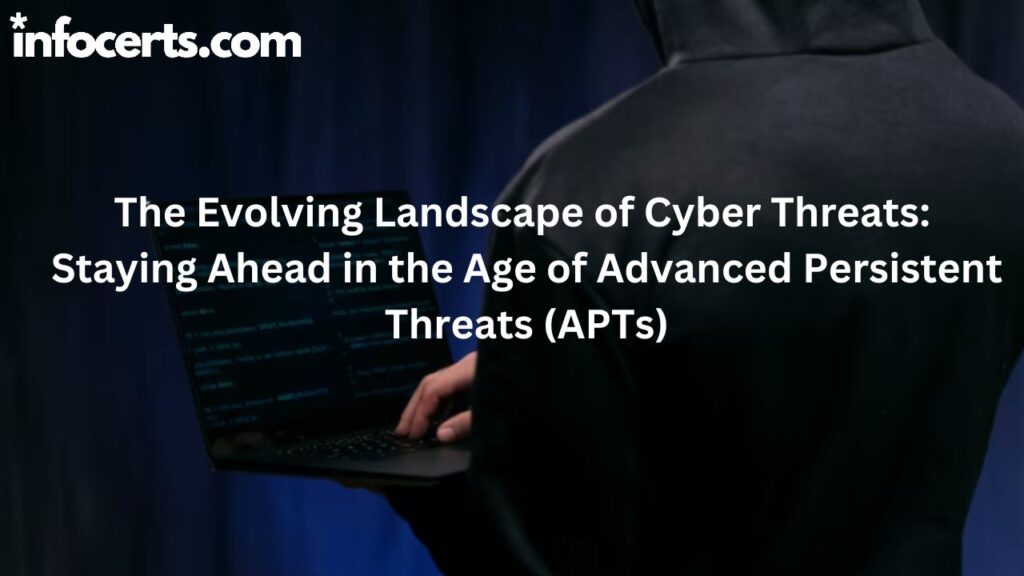Introduction:
In today’s interconnected world, businesses and individuals face an ever-evolving and complex landscape of cyber threats. Among the most significant challenges are Advanced Persistent Threats (APTs). These sophisticated and stealthy attacks, orchestrated by skilled threat actors, can remain undetected within networks for extended periods, causing substantial damage and Data Breaches. To safeguard our digital assets and privacy, it is crucial to adopt proactive strategies and remain vigilant in countering APTs.
Understanding Advanced Persistent Threats:
APTs are not your typical run-of-the-mill cyberattacks. These threats are meticulously planned, long-term campaigns aimed at infiltrating and compromising targeted systems, often driven by state-sponsored actors or organized Cybercriminal groups. The primary objectives of APTs can vary from corporate espionage, intellectual property theft, or gaining access to sensitive government data.
Tactics Employed by APTs:
APTs employ a combination of techniques to penetrate and maintain their presence in a target’s infrastructure. These may include social engineering, spear-phishing, zero-day exploits, and leveraging unpatched vulnerabilities. Once inside the network, APTs stealthily move laterally, avoiding detection and exfiltrating valuable data without raising alarm bells.
Staying Ahead of APTs:
- Regular Cybersecurity Training: Educate employees about the latest APT tactics and the importance of vigilant cybersecurity practices. Human error remains a significant entry point for APTs, and informed employees can act as the first line of defense.
- Robust Network Monitoring: Implement advanced monitoring solutions to detect anomalous activities within the network. Behavioral analytics and anomaly detection can help identify suspicious behaviors indicative of APT presence.
- Patch Management: Regularly update and patch software and systems to close potential security loopholes. APTs often exploit known vulnerabilities, and timely patching can prevent their entry.
- Multi-Factor Authentication (MFA): Enforce MFA across all access points to reduce the risk of unauthorized access, even if login credentials are compromised.
- Encryption and Secure Data Storage: Encrypt sensitive data both in transit and at rest. This ensures that even if APTs manage to access the data, it remains unintelligible to them.
- Incident Response Plan: Develop a comprehensive incident response plan to handle suspected APT incidents promptly and effectively. This should include isolating affected systems, conducting forensic investigations, and notifying appropriate stakeholders.
| Proactive Strategy | Description |
| Regular Cybersecurity Training | Educate employees about APT tactics and the importance of Vigilance. |
| Robust Network Monitoring | Implement advanced monitoring solutions to detect APT activities. |
| Patch Management | Regularly update and patch software and systems to close Vulnerabilities. |
| Multi-Factor Authentication | Enforce MFA across all access points to reduce unauthorized access risk. |
| Encryption and Data Storage | Encrypt sensitive data in transit and at rest for enhanced protection. |
| Incident Response Plan | Develop a comprehensive plan to handle suspected APT incidents. |
Conclusion:
As the digital landscape evolves, so do the threats we face. APTs pose a substantial risk to organizations and individuals alike, demanding a proactive approach to cybersecurity. By staying informed, implementing robust security measures, and fostering a cybersecurity-conscious culture, we can better protect ourselves against these sophisticated threats and secure our digital future.
FaQs:
- What are Advanced Persistent Threats (APTs), and how do they differ from typical cyberattacks?
- What tactics do Advanced Persistent Threats (APTs) use to infiltrate and maintain a presence within a target’s network?
- What proactive strategies can individuals and organizations adopt to defend against APTs?
- How does regular cybersecurity training contribute to mitigating the risks posed by APTs?
- What role does network monitoring play in detecting and responding to APT activities?
——————————————————————————————————————–
Infocerts, 5B 306 Riverside Greens, Panvel, Raigad 410206 Maharashtra, India
Contact us – https://www.infocerts.com

